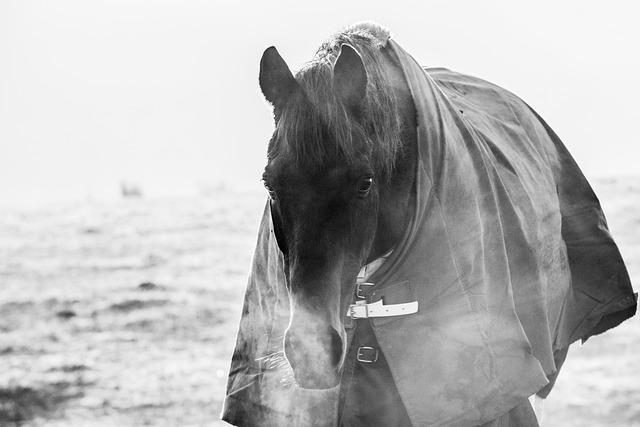
Rugging horses can be a valuable asset when the weather turns cold.
Horses that are well-nourished and kept warm in cold weather are less likely to suffer from illness or injury.
Some people also keep rugs around their horses’ stalls to help them stay comfortable and dry.
But before deciding to rug your horse there are some important factors to consider first.
Factors to consider when rugging a horse
-
Horses are very adaptable to different climates
The horse is a warm-blooded animal. It tries to keep its central (core) temperature close to 38°C irrespective of what the environmental conditions around it are. So, horses can be active all year round, and their activity does not decrease when it’s cold or hot.
But the disadvantage is that it must take in a lot more energy to generate the heat to keep the body at the optimal temperature. And it must use energy to cool itself down when the weather is hot.
Environment also plays a large part in the rugging decision. If horses are in large paddocks that have a variety of undulation they then have the ability to move into warmer or less windy locations by choice. In those situations rugs will often not be needed at all as the horses can regulate themselves.
Wind shelter is the most effective element for allowing horses to regulate their own conditions.
-
Don’t rug horses based on how cold you feel!
In general, horses are comfortable between 5-25℃, whilst humans are comfortable between 25-30℃. That means that we feel cold before horses do, but horses feel hot before we do.
Outside of the horse’s thermoneutral zones (5-25℃) is when the horse must use other means to keep warm or cool.
-
Rugs can prevent sunlight from reaching the skin which is necessary for the generation of Vitamin D.
An hour a day exposure without a rug should be enough.
-
It is best to start with lighter rugs and move to thicker rugs as it gets colder.
Especially because over rugging may cause your horse to be too hot and sweaty. Sweating causes the skin to become hyper-hydrated and more prone to damage and infection.
-
Older horses, young horses, thin horses and clipped horses will need rugs first
Young horses are smaller and often have less body fat and will lose heat more rapidly. Older horses can have a reduced ability to control their body temperature. Thin horses may not have enough body fat to insulate against the cold weather. Clipped horses have a shorter coat which may have less ability to retain heat.
-
Weather, breed, coat, diet and shelter also have a contributing factor
Horses in small enclosures without access to windbreak shelters will need thicker rugs as the temperature drops.
Tip: Some horses cope better with cold than others. So whilst there are general rules, it’s still important to observe the individual horse.
How to determine your horse’s temperature?
A good spot to determine is by placing your hand under the rug behind the withers. If it feels cold then you may want to consider a thicker rug. If it feels damp then you may want to consider removing the rug as it’s likely your horse is too warm.
Conclusion
It is evident that horses can be rugged during the winter months with the proper care. By following a few simple tips, horse owners can help their horses stay healthy and comfortable during the cold weather.
Reference sites
https://www.facebook.com/ponyclubaustralia/
